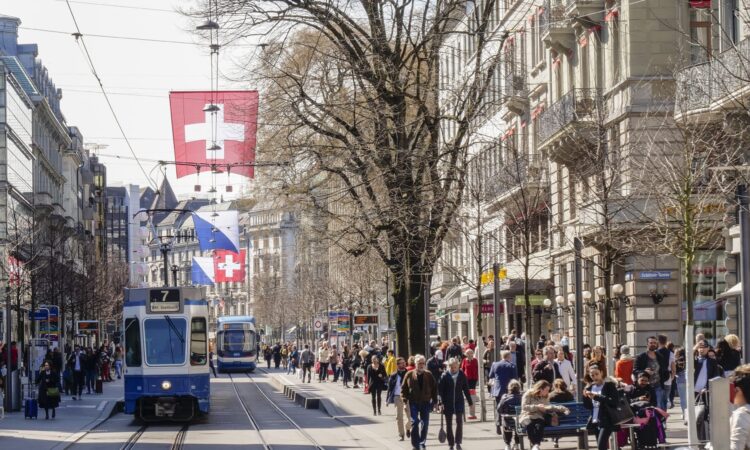Worldwide Cost of Living: Singapore and Zurich top the ranking as the world’s most expensive cities

- EIU’s Worldwide Cost of Living survey found that, on average, prices rose by 7.4% year on year in local-currency terms. Price growth has slowed from the 8.1% reported in last year’s survey, but remains significantly above the trend in 2017-21.
- Singapore maintained its pole position as the world’s most expensive city for the ninth time in the last eleven years, tying with Zurich (Switzerland) and overtaking New York (US), which fell to third place this year.
- Although three US cities (New York, Los Angeles, and San Francisco) are among the top ten, North American cities have, on average, slipped down our cost-of-living rankings.
- Western Europe accounts for four of the top ten most expensive cities in our rankings, owing to sticky inflation in groceries and clothing along with appreciation of the region’s currencies.
- The Russian cities of Moscow and St Petersburg experienced the biggest drop in the rankings as sanctions weakened the rouble.
- Of the ten categories in our price index, utility prices rose the most slowly over the past year, reflecting the waning impact of Russia’s invasion of Ukraine in 2022. Grocery prices, however, continue to rise strongly.
This year’s Worldwide Cost of Living survey found that, on average, prices had risen by 7.4% year on year in local-currency terms for over 200 commonly used goods and services. This marks a decline from the record 8.1% increase reported last year, but price growth remains significantly higher than the trend in 2017-21. Although this year’s survey covers 173 of the world’s major cities, the global average has been calculated by excluding Kyiv (which was not surveyed in 2022) and Caracas (which continues to face hyperinflation), as was the case last year.
Singapore and Zurich were the most expensive cities in this year’s survey. Zurich moved up from sixth place to join Singapore at the top, bumping New York (which tied with Singapore for first place last year) down to third place. Zurich, which is back at the top after three years, moved up due to the strength of the Swiss franc, as well as high prices for groceries, household goods and recreation. Overall, our top ten this year consists of two Asian cities (Singapore and Hong Kong), four European cities (Zurich, Geneva, Paris and Copenhagen), three US cities (New York, Los Angeles and San Francisco) and Tel Aviv in Israel. Our survey was conducted before the start of the Israel-Hamas war, which has affected the exchange rates in Israel and may have made it harder to procure some goods in Tel Aviv, thereby affecting prices.
Globally, utility prices (household energy and water bills) witnessed the slowest inflation of the ten categories covered in our survey. This was the fastest-rising category in 2022 and the moderation suggests an easing of the energy price shocks caused by Russia’s invasion of Ukraine. Grocery, on the other hand, saw the fastest pace of price growth. Food inflation has been sticky across the world as many manufacturers and retailers have passed on higher costs to consumers and the increasing frequency of extreme weather events continues to keep supply-side risks elevated.
A free summary report can be downloaded here.
Besides easing supply-side tensions, the hawkish monetary policy stance adopted by the US Federal Reserve has helped moderate inflation in the country by our calculations. Moreover, several foreign currencies have appreciated against the US dollar in 2023. Both these factors have led to the majority of the 22 US cities covered in our survey falling down the ranks. Even then three US cities (New York, Los Angeles, and San Francisco) are among the top ten. In New York prices were up by 1.9%. Although some grocery items, such as eggs and beef, and recreational activities saw increases, prices remained subdued for others, including petrol and clothing.
On the other hand, cities in Latin America and western Europe have moved up. The Mexican cities of Santiago de Querétaro and Aguascalientes were the biggest movers up the rankings, with the peso proving to be one of the strongest emerging market currencies in 2023, on the back of interest-rate rises and strong inward investment. European cities, in general, have moved up the ranks amid sticky inflation as well as appreciation in the euro and other local currencies in the region. Asia continues to see relatively low price increases on average. Four Chinese cities (Nanjing, Wuxi, Dalian and Beijing) and two Japanese ones (Osaka and Tokyo) were among the biggest movers down the ranking this year.
“The supply-side shocks that drove price increases in 2021-22 have reduced since China lifted its covid-19 restrictions in late 2022, while the spike in energy prices seen after Russia invaded Ukraine in February 2022 has also eased. However, the cost-of-living crisis is hardly over and price levels remain much above historical trends. We expect inflation to continue to decelerate in 2024, as the lagged impact of interest-rate rises starts affecting economic activity, and in turn, consumer demand. But upside risks remain—further escalations of the Israel-Hamas war would drive up energy prices, while a greater than expected impact from El Niño would push up food prices even further.”
Upasana Dutt, Head of Worldwide Cost of Living at EIU
A free summary report can be downloaded here.



